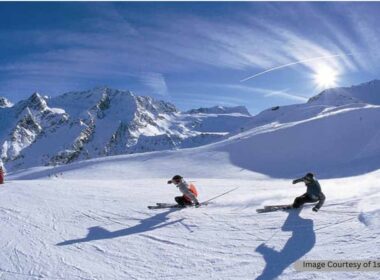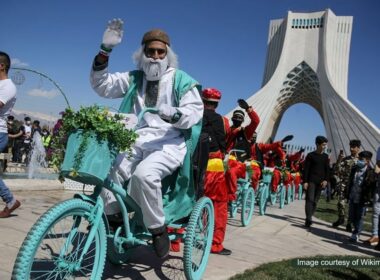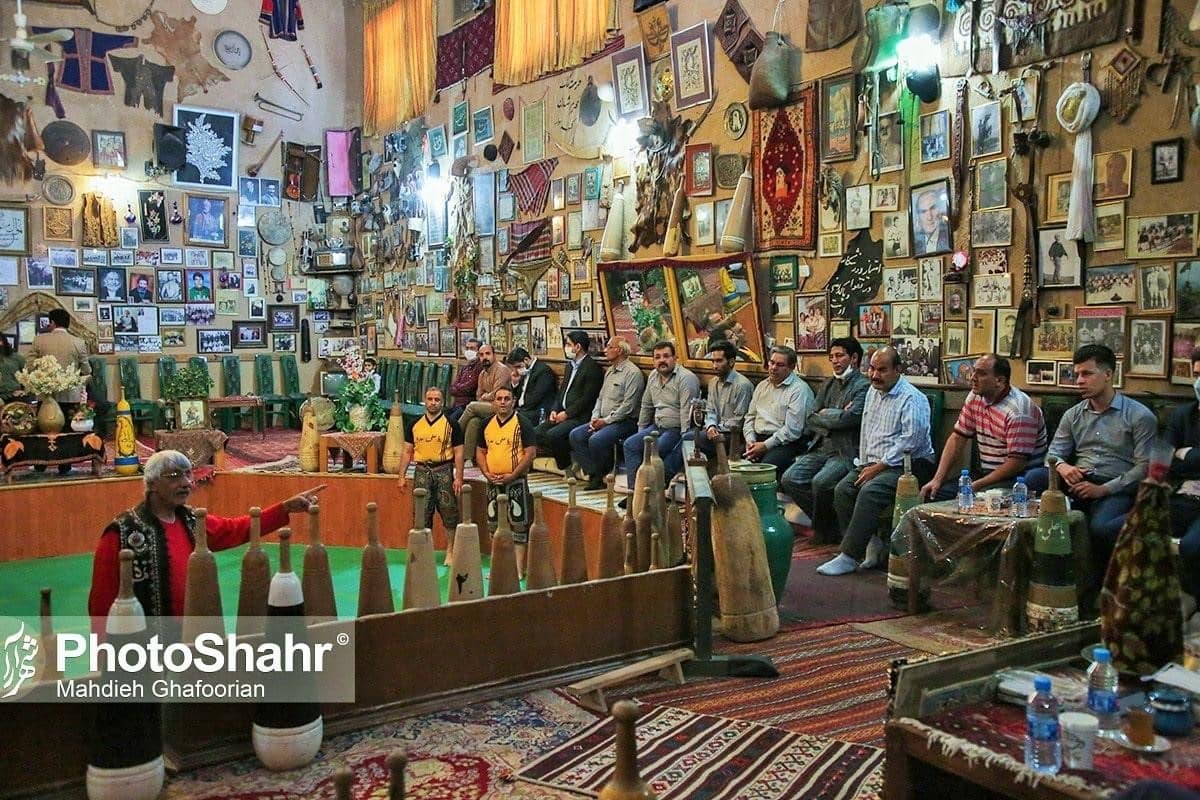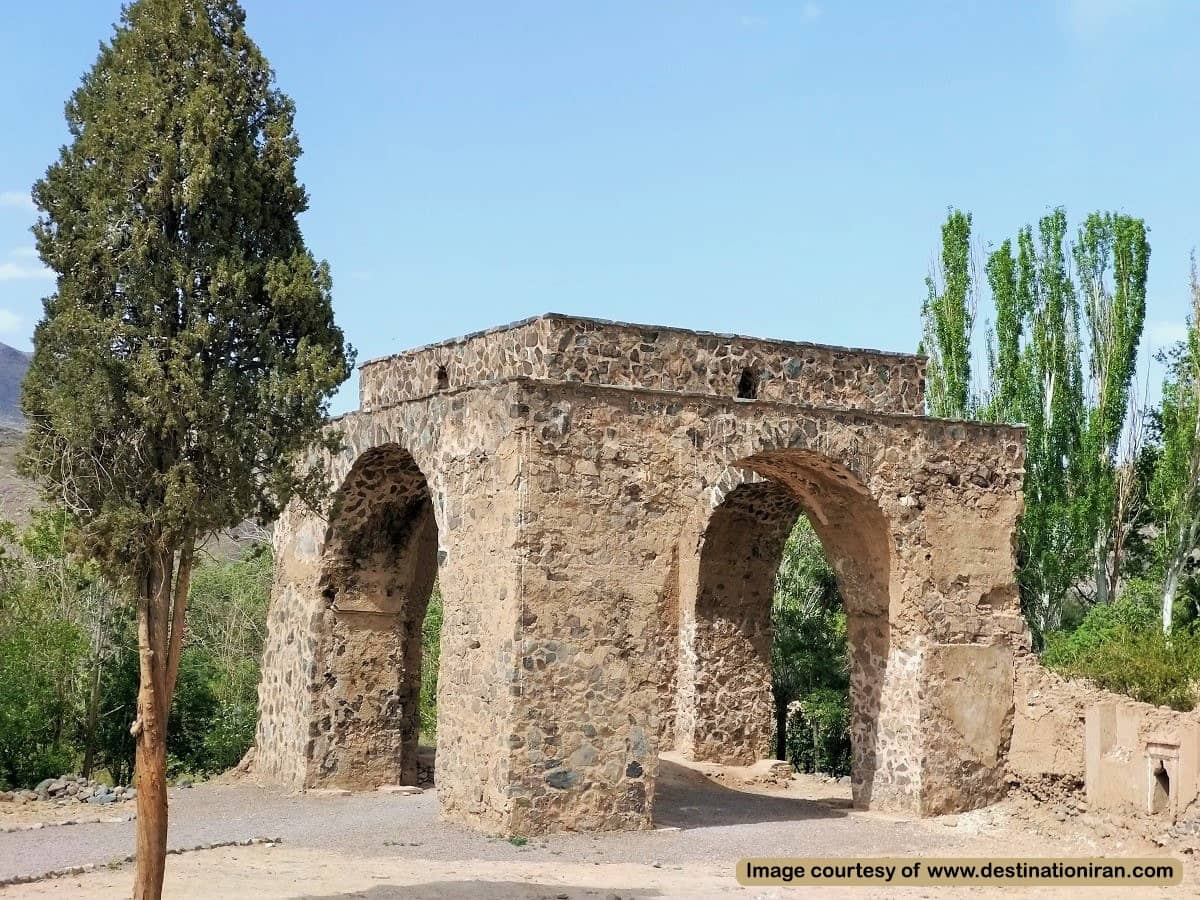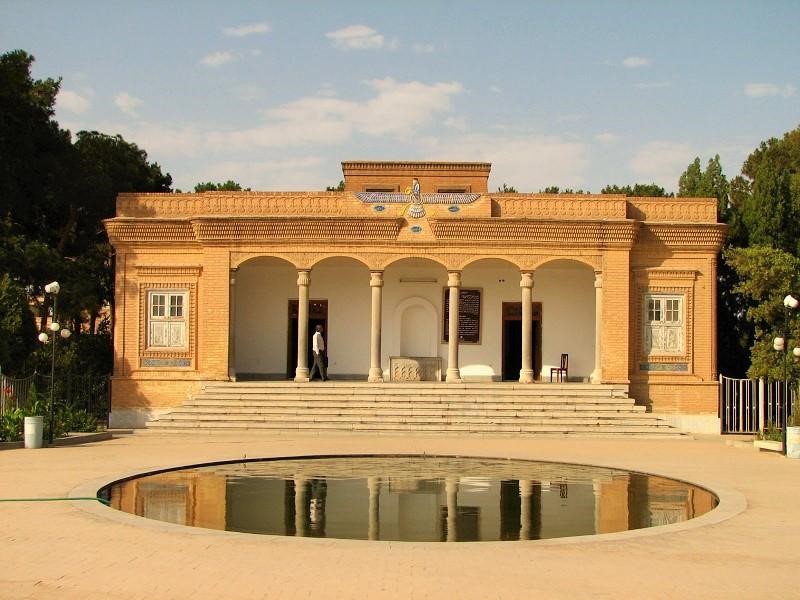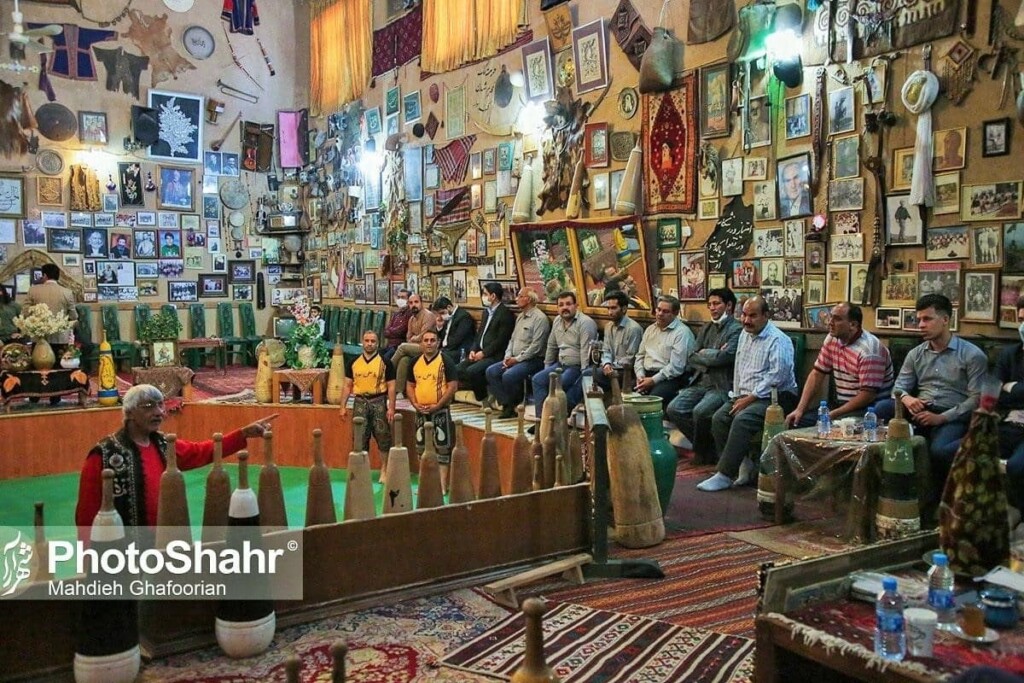
Mashhad is the second biggest city in Iran with plenty of tourist attractions. There are villages near the city that hold surprisingly beautiful historical monuments. For example, the Chahar Borj village of Mashhad is located in Tus district, the central part of Mashhad County. There is a unique museum in the heart of the city called the Shah Lafata Museum of Mashhad or Shah Lafata Zoorkhaneh, which attracts lots of tourists to this village.
History of Shah Lafata Museum in Mashhad
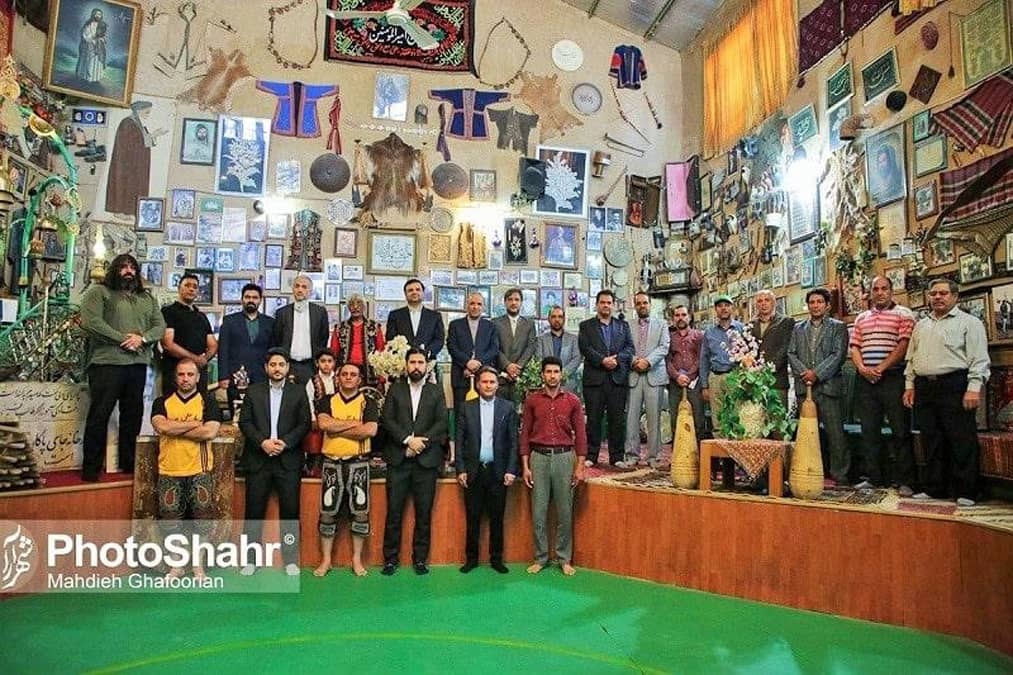
In the past, there were gymnasiums in most Iranian cities, where people practiced Pahlevani and Zoorkhaneh rituals. Zoorkhaneh rituals (Pahlevani rituals) were the main ritual activities performed in a zoorkhaneh. In 2009, Zoorkhaneh and Pahlevani rituals were recognized by the list of intangible cultural heritage in UNESCO.
In Zoorkhaneh, there was a Murshid (spiritual guide) who would play rhythms on a Zarb goblet drum and recite Ferdowsi’s poems. Over time, these ancient rituals faded away and the athletes (Pahlevans) dispersed.
Ali Akbar Qasemi, publicly known as Pahlevan Rostam, is one of the Pahlevans of the Shah Lafata Zoorkhaneh. He has been trying to revive these ancient rituals. He used to travel to different cities in Iran and collect artifacts related to Zoorkhaneh rituals and history. In addition to domestic trips, Pahlevan Rostam also traveled to 17 countries in the world to meet with Pahlevans around the world. During these trips, he received many items related to Zoorkhaneh from these Pahlevans as souvenirs.
Then, in 1989, Qasemi started a museum in Mashhad with the artifacts he had collected from his travels. Today, this museum is called the Shah Lafata Museum of Mashhad and aims to preserve the Pahlevani rituals of Shah Lafata Zoorkhaneh.
Features of Shah Lafata Museum of Mashhad
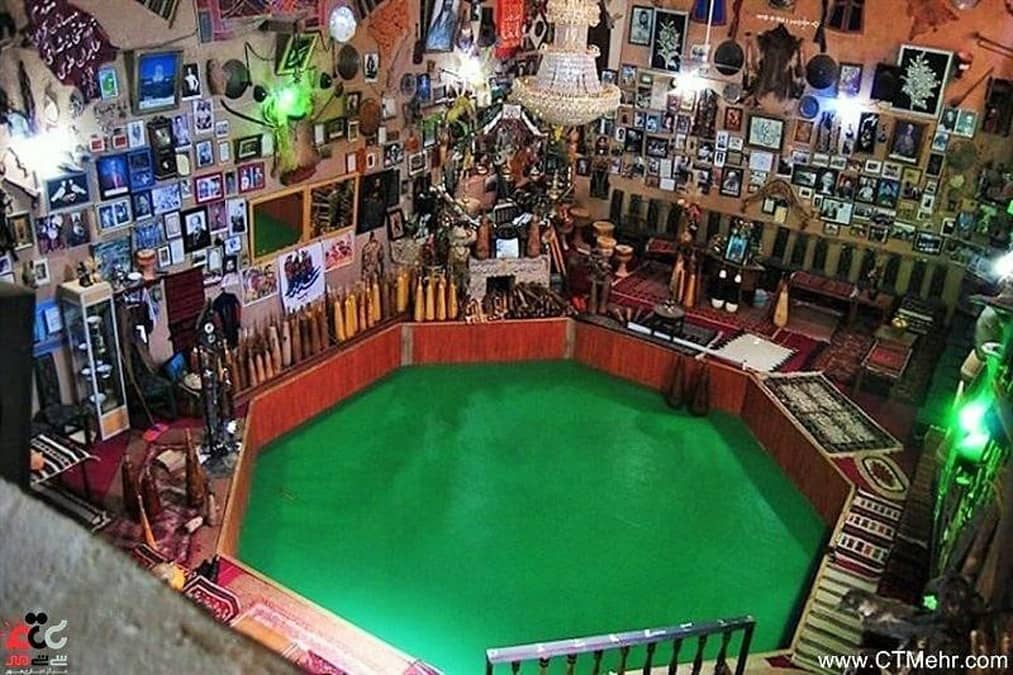
The building where the museum is located is similar to the classic Zoorkhanehs with unique features. It is built in an area of 2000 square meters.
The small door placed at the entrance to the museum is shorter than the height of an average person. Therefore, you must bow your head to enter the museum. This is because the Pahlevans were humble in the past and would bow their heads as a sign of respect when entering the Zoorkhaneh.
During their rituals, they recited the names of religious figures Imam Ali, and Abul Fazl and had special respect for them. Pahlevans believed that the first imam of the Shias is the pinnacle of chivalry and humanity.
There is a poem written on the entrance to the Shah Lafata Museum in Mashhad, which roughly translates as:
Bow your head in respect when you enter
Because it is courtesy and the ritual of chivalrous men
After passing through the entrance, you will see two sections of Zoorkhaneh and Ayyarkhaneh inside the building. These two sections are separated. we’ll briefly describe them.
Zoorkhaneh section:
This is the main section of the museum and many objects are showcased in this area. The objects in Zoorkhaneh include figures, photos, and ritual instruments of contemporary Pahlevans (such as Mil and Kabaddeh that represent ancient weaponry such as clubs, bows, etc.). There is a section called Langari (anchor area), where Pahlevans use to rest. In this area, Pahlevans used to drink natural teas such as lavender and Hollyhocks tea while resting.
Ancient sports are usually performed in the Zoorkhaneh section. Pahlevans ask for Rokhsat (permission) from the Murshid to enter the Zoorkhaneh Gowd (pit) and exercise. It is interesting to know that the Murshid of this zoorkhaneh is still Pahlevan Rostam or Ali Akbar Ghasemi as of 2023.
Ayyarkhaneh section:
This section is a place where Pahlevans and Ayyars (vagabonds) practice Cheleh-neshini. It includes a forty-day solitude for worship and prayer, which is a more popular ritual among dervishes.
Ayyarkhaneh has eight seats, two of which are reserved for Sadat Alavi and Razavi (descendants of Shia Imams), and two are for Murshids. The remaining four places are for the Pahlevans visiting from other settlements and villages such as Darvazeh Khabushan, Tairan, Razan, Marv, and their Nochehs (disciples).
Visit Shah Lafata Museum in Mashhad
Shah Lafata Museum of Mashhad is a destination that presents ancient Pahlevani rituals to the public. This museum is very different from other museums. The charm of this museum is that you can see the objects related to this aspect of Iranian culture and the practice of Zoorkhaneh and Pahlevani rituals at the same time. For this reason, it attracts many tourists from Iran and abroad.
If you travel to Mashhad on an Iran tour package or by yourself, do not miss visiting this museum. Shah Lafata Zoorkhaneh is located 30 km from Mashhad in the village of Chahar Borj. Destination Iran suggests reading more about Mashhad tourist attractions and visiting other historical monuments in Mashhad.


